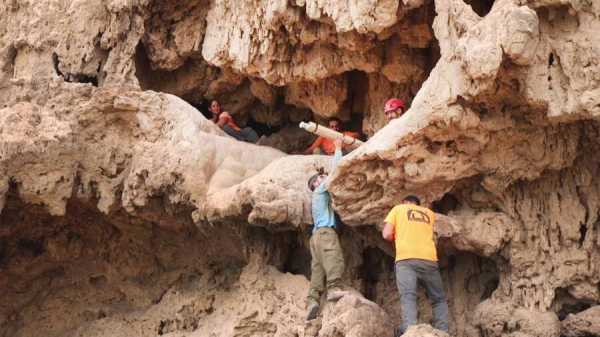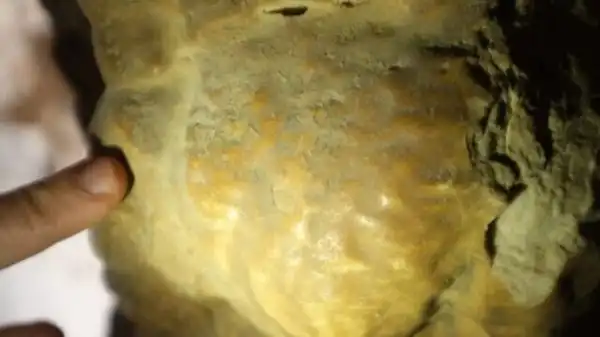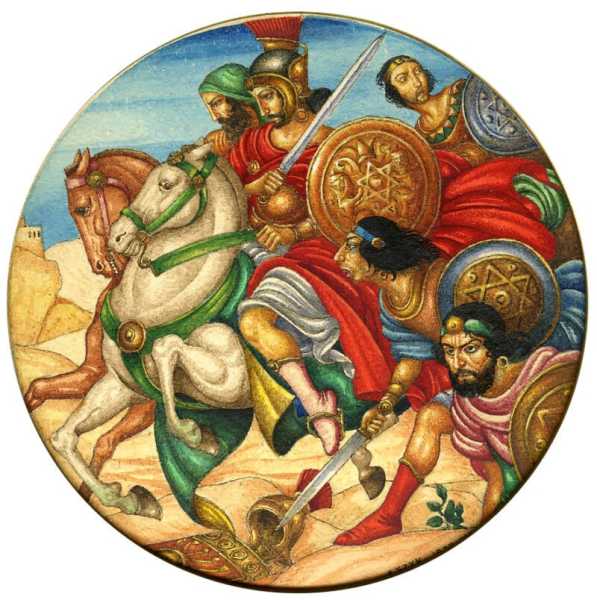
Emil Aladjem/Israel Antiquities Authority The Dead Sea cave where archaeologists documented the description.
In 2023, researchers ventured into a cliffside cavern near the Dead Sea to examine an ancient stalactite engraving—a 2,700-year-old relic from the First Temple era previously recorded. During their mission, they uncovered a second, unnoticed inscription etched into the rock beneath it.
This 1,900-year-old Aramaic text retains an air of enigma, potentially linked to the violent Bar Kokhba Revolt, a Jewish uprising against Roman forces during the second century CE
The cryptic message, combined with four antique blades found in the cave's recesses, hints that the site might have sheltered rebels between 132 and 136 CE
Unearthing The Aramaic Engraving In A Dead Sea Cavern
The revelation of this hidden script occurred unexpectedly. As detailed in a 2023 Facebook update by the Israel Antiquities Authority, archaeologists initially visited to capture images of the ancient Hebrew description using advanced multispectral technology, aiming to reveal obscured details. During this process, they detected the fainter Aramaic markings on the stalactite's lower section.

Asaph GayerThis inscription, previously undocumented, is written in Aramaic and dates to the 2nd century CE.
Measuring merely 3.15 by 1.38 inches, the fragment employs a square Hebrew script akin to modern lettering developed post-sixth century BCE Partial phrases include “Avva of Naburia perished.” Scholars have yet to decode the entire text but identified terms like “upon us,” “he seized,” and “that.”
“Avva” was a common Jewish name in early centuries CE, while “Naburia” refers to a village near Galilee. Despite uncertainties, experts propose the engraving originates from the second century CE, likely during Bar Kokhba's revolt.
Linking The Script To The Bar Kokhba Rebellion
Linguistic and stylistic analysis dates the text between the first and second centuries CE, placing it within the First Jewish Revolt (66–73 CE), the Bar Kokhba uprising, or intervening years. However, additional clues within the cave point more strongly to the latter.

Public Domain Simon bar Kokhba, the Jewish leader who initiated the rebellion against Roman rule in 132 CE
Proximity to the inscription, archaeologists recovered a Bar Kokhba-era coin and four remarkably preserved Roman swords—three still sheathed in wooden scabbards. The cave's confined space suggests it served as a tactical base for raids rather than living quarters.
“Concealing these weapons in remote crevices implies they were seized from Roman troops or battlefields and stored by Judean rebels for future use,” stated Dr. Eitan Klein of the Judean Desert Survey Project in the 2023 announcement. “We aim to pinpoint the event that prompted their concealment and confirm its connection to the Bar Kokhba insurgency.”

Emil Aladjem/Israel Antiquities AuthorityFour Roman swords were hidden in the crevice, three of them still in their wooden scabbards.
This serendipitous discovery offers a tantalizing glimpse into the Bar Kokhba Revolt's turbulent history. Scholars continue deciphering the description and scouring the cave for additional messages from the past.
After exploring this ancient Aramaic find, delve into the history of Golgotha, the biblical crucifixion site, and learn about Pontius Pilate, the Roman official who ordered Jesus's execution.
Sourse: www.allthatsinteresting.com





